Anatomy Of A Scene: How The “Deadpool” VFX Team Made That Insane Opening Sequence
Deadpool director Tim Miller had a luxury problem. For a moment in 2014, it seemed like he’d done his job a little too well.
The test footage Miller put together to give the Marvel team a flavor of what his (then hoped-for) R-rated superhero film would feel like ended up leaking online. The subsequent fanboy-hype reverberated all throughout the rest of the process, setting a high bar to live up to. Considering that Miller had his own production company, Blur Studio, pitching in the whole time, however, living up to premature hype ended up not being a problem at all.
Statistically, if you’re reading this, you likely contributed to Deadpool‘s record-crushing $300 million box office and helped make it the most talked-about film this year. In that case, you’ve likely spent time in a theater marveling over the bravura title sequence that kicks the movie off—quite literally—with guns blazing. The scene as written is rather detailed—a nearly frozen tableau of Deadpool kicking ass during the middle of a car accident in progress. It’s a compact way to convey the tone and look of the film, and it sets up expectations for the inevitable rewind that reveals how this bit of bedlam came to be.

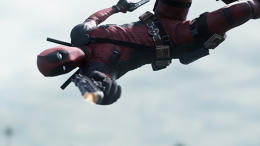
“We knew from the script that the whole car chase was going to be a mix of new scenes and also an homage to the original footage that got leaked on the Internet,” says Franck Balson, a director and editorial supervisor who works at Blur Studio. “So we wanted to keep what got the movie so much attention in the first place and add some new jokes and other fun stuff.”
Blur handled the title sequence from start to finish, but the studio also had a hand in the rest of the film’s effects. The postproduction and editing were also done at Blur, so that director Miller could have access to the VFX supervisor and the editor at all times. With the film’s imaginative, hyper-violent title sequence, and the freeway chase that ties into it, still fresh in our brains, Co.Create talked with Blur’s Franck Balson about how it all came together.

“We spent a lot of time trying to figure out how this frozen moment was going to look, and make sure it was physically plausible, like ‘Well, if he’s pulling the underwear of this guy midair that is something we can sort of explain how he got there later on,'” Balson says. “It was figuring out the logistics of each guy in the car, where they were positioned, so it wouldn’t end up biting us in the ass later on when we got to the actual car chase. We posed all these characters, and built backwards from there.”
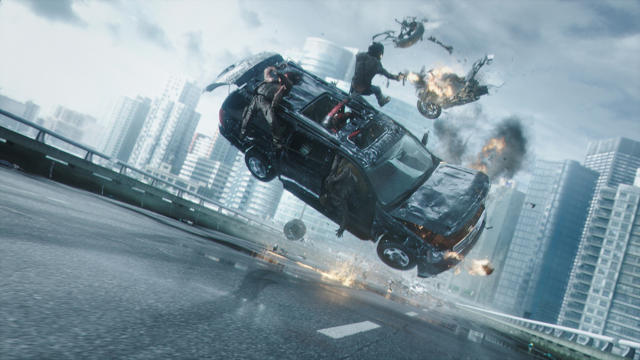
“In this sequence, we went from script to previsualization—there was no storyboard,” Balson says. “Basically, previs is kind of the advanced version of storyboards. I think storyboards are great to get everyone on board with what the idea is, but you have a lot more flexibility within the 3-D environment to create a lot of different angles really quickly and we’ve been working with this medium for so long that we’re kind of past the storyboard phase now.”

“When you look at the previs for the car chase, you see the guy actually getting the lighter put in his mouth, not on his forehead, and that’s one thing that changed during the shoot—instead of putting it directly into his mouth, they had a thing where it goes on his forehead and then in his mouth,” Balson says. “That’s why that wasn’t in the previs, because that was an idea they had on the day of the shoot. We ended up doing the intro sequence much later and so at that point everyone already knew he was going to have a burn mark and we didn’t really need to spend time adding that reference.”

“Once we’re done with previs, the action is already laid out to a pretty high degree of stability to what’s really gonna happen,” Balson says. “You end up with an edited piece, which is becoming the blueprint for either the effects work or for going to shoot live plates with real actors and real stunt guys.”

“Whenever you create a character or a car within the computer, it consists of a lot of points within the file, all connected by lines, which creates the polygon,” Balson says. “A wireframe is a visual representation of those polygon, it’s a way of displaying your information within a viewpoint of the software. It’s just a display option but it offers a good view of the physics of a scene.”
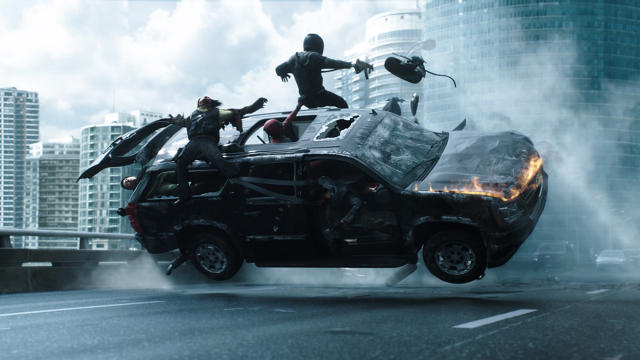
“It’s all about what you want to convey in the previs. For the opening title sequence, we basically started with defining the position of the characters up in the air,” Balson says. “At that point, Ryan Reynolds was the only person in the cast, that’s how early on it was, and we weren’t sure what kind of budget we would have so at that point we were just trying to determine the position of the car, position of the characters. Then we started working on the actual sequence where the car flips and all that stuff happens.”

“We would meet up with stunt choreographer and talk about all the actions we want to have, then there’s a day or two of rehearsal and then we’d go into mo-cap stage, shooting with guys wearing spandex black suits with markers on them,” Balson says. “The good thing about mo-cap is it’s camera-agnostic—you don’t have to act to a camera. Once we have this, we are able with our software to retarget that animation that was captured onto computer generated skeletons. Then you can start playing around with camera angles. You can try different things really fast.”
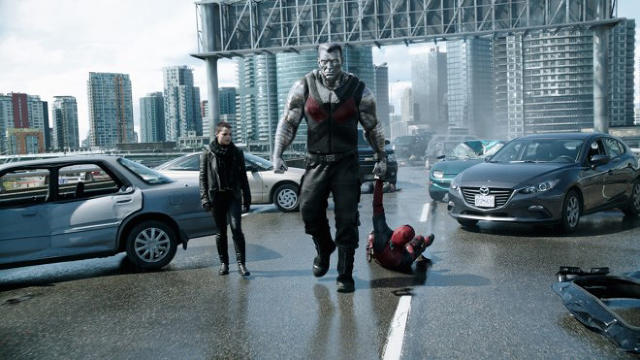
“I’ve been working with Tim Miller for more than eight years now. I know what he likes to see and what he doesn’t, and that makes the communication really clear,” Balson says. “He’s very aware of technical challenges and how things are done. He knows what’s doable, what’s expensive, what to expect at what moment, how rough it’s going to look early on. You don’t have to spend time communicating that to him.”

“The biggest challenge originally was figuring out how this scene was going to be created—was it going to be full CG, were they going to be able to close part of the freeway and film the cars in live action?” Balson says. “Because the budget of the movie is actually quite small for a superhero movie, and because Tim [Miller] is comfortable in the CG world, he had complete confidence in the VFX suit and the VFX houses that they could pull of doing a whole car chase sequence in CG. So once the previs got made, it was decided that the whole title sequence was going to be handled in CG.”

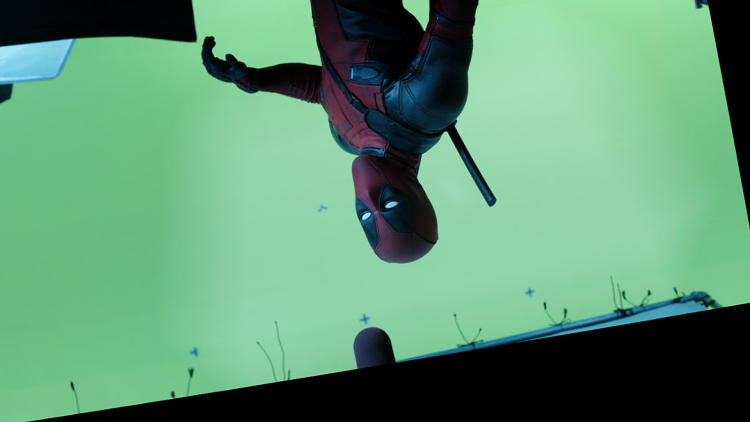





Fast Company , Read Full Story
(142)














